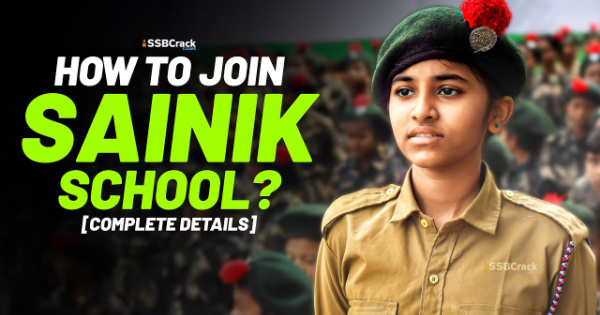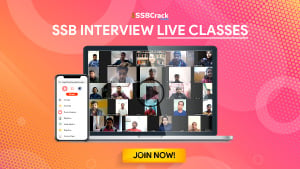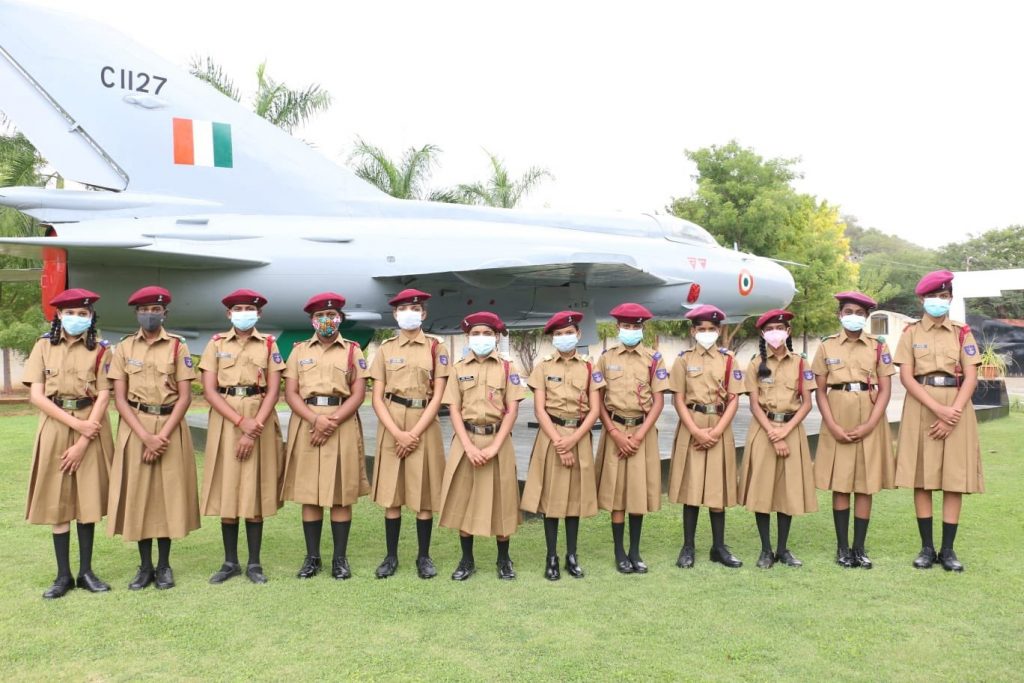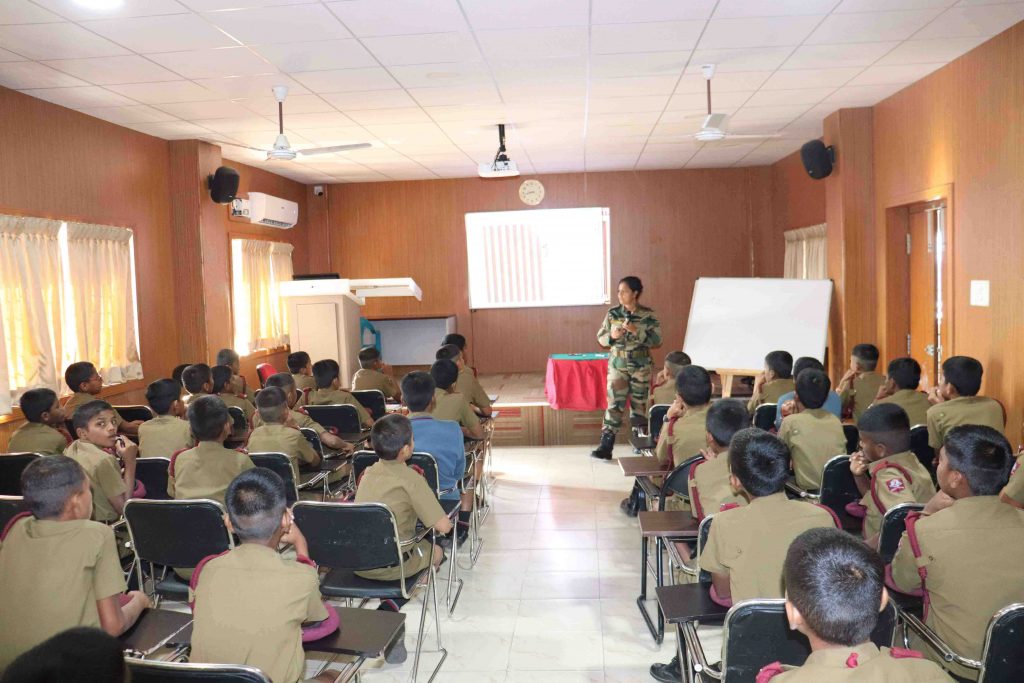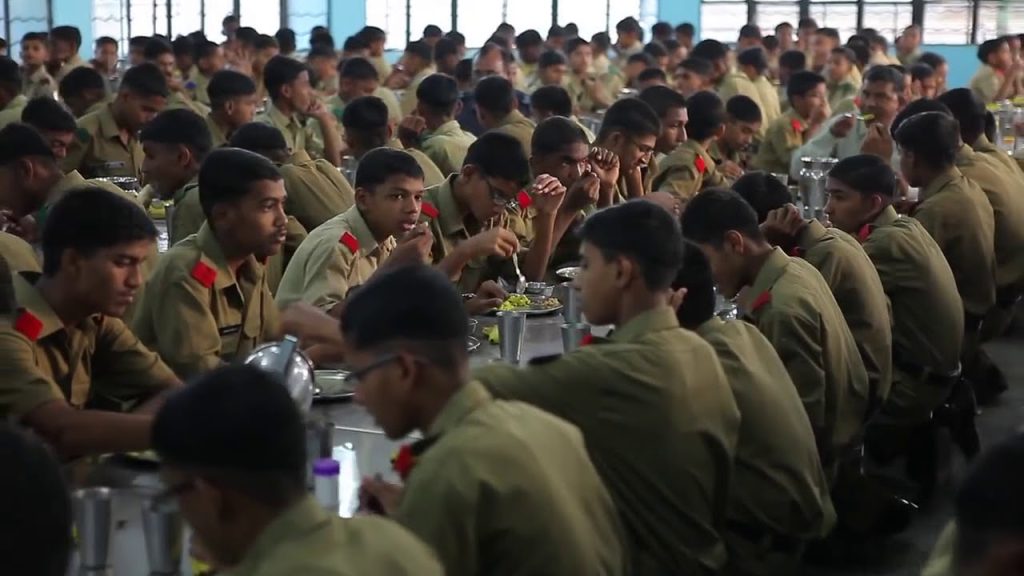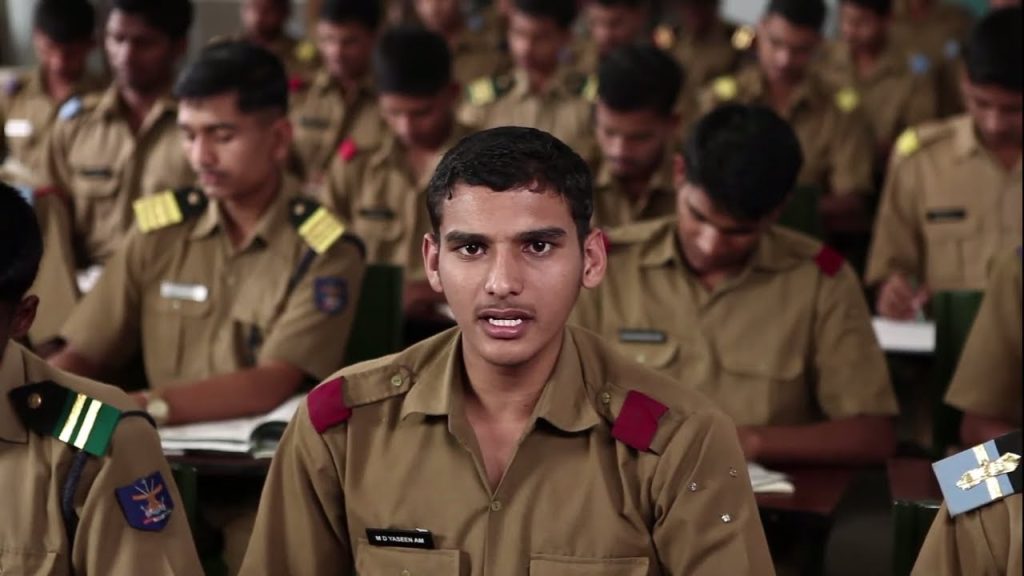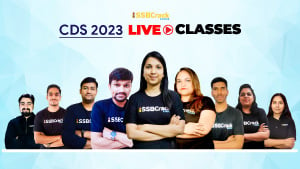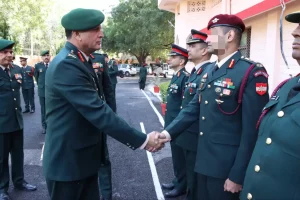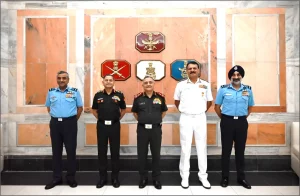Sainik Schools are English medium residential schools affiliated with the Central Board of Secondary Education(CBSE). Sainik Schools prepare Cadets to join the National Defence Academy (NDA), Khadakwasla (Pune), Indian Naval Academy, Ezhimala and other Training Academies for officers. At present, there are a total of 33 Sainik Schools under the Sainik School Society. Capt Manoj Pandey Sainik School doesn’t fall under the ambit of the Sainik Schools Society thus it conducts its own entrance examinations for admissions to classes VI, VII and IX across the country spread across 23 states.
Sainik School Admission Process
Candidates need to apply through the exam conducting authority NTA’s website. After registration that there will be an All India Entrance Exam conducted by NTA Candidates who qualify for the written exam will be called for medicals by the respective Sainik Schools they gave their preference. Then medicals will be conducted at the nearby military hospital where if the candidate is declared fit then his final selection will be done based on marks secured in the Entrance Exam.
Sainik School Application Forms
Filling out forms and payments will all be done online. Candidates are advised to first go through the Admission Bulletin uploaded on the AISSEE NTA website The following are to be ensured before filling out forms
- An e-mail id for a candidate
- Scanned Copies of photographs, signature, left-hand thumb impression, birth certificate, domicile certificate, caste certificates if applicable, service certificate in case of wards of defence personnel, ID proof, Source of online payments
Also read: Full List Of Sainik Schools In India
Candidates will have to first register using their credentials and then they can fill out their examination form. Following are some of the points to be kept in mind
- Candidates can select only one Sainik School as their preference.
- Candidates can select four examination centres out of which one will be allotted to them as per the preference order given and the seats available. There are around 180 exam centres all over India.
- As the Question Paper would be bilingual, candidates need to mention their preferred languages. If the candidate chooses English or Hindi in the application form the paper would be in both the mediums but if he chooses one amongst the following then questions would be in English and the language chosen
- Assamese
- Bengali
- Gujarati
- Kannada
- Malayalam
- Marathi
- Odiya
- Punjabi
- Tamil
- Telugu
- Urdu
Sainik School Reservations
67% of the seats are reserved for candidates domiciled in the State/ UT where the Sainik School is located. 33% of the seats are reserved for candidates from Other States and Union Territories(UT). Within each Category of Home State/ UT and Other States/ UT quota, seats will be reserved on the following lines:
- 15% of the seats are reserved for the category Scheduled Caste (SC)
- 7.5% for the category Scheduled Tribe (ST)
27% for the category Other Backward Classes belonging to the Non Creamy layer (OBC-NCL) as per the central list. Thus, 49.50% of the seats in Sainik School are reserved on the above-mentioned lines. Out of the balance 50.50% of the seats in the Home State/ UT and the Other States/ UT quota, 25% of the seats are reserved for the wards of defence personnel and ex-servicemen. In the “Other States/ UT” quota, seats will be allotted in each category as per merit, subject to a maximum limit of 25% of vacancies in the category for any State or Union Territory.
Sainik School Written Exam
Candidates need to report at least 45 minutes before the exam and need to carry their Admit Card, an identity proof(Aadhar card) and any other document as per the admit card. The examination will be conducted offline and candidates have to mark their responses on OMR Sheet.
Scheme of Paper for Class 6th Std Students
Scheme of Paper for Class 9th Std Students
Total Time Allotted: 150 minutes (two and a half hours) No negative marking means candidates will not lose marks if they give wrong answers
Sainik School Written Exam Syllabus
Mathematics
There will be 50 questions of 3 marks each. Totalling 150 marks or half of the total marks signifies the huge importance of the subject.
- Natural Numbers
- Conversion of Units
- LCM and HCF
- Roman Numerals
- Unitary Method
- Types of Angles
- Fractions
- Circle
- Ratio and Proportion
- The volume of Cube and Cuboids
- Profit and Loss
- Prime and Composite Numbers
- Simplification
- Plane
- Figures
- Average
- Decimal Numbers
- Percentage
- Speed and Time
- Area and Perimeter
- Operation on Numbers
- Simple Interest
- Complementary and Supplementary Angles
- Lines and Angles
- Arranging of Fractions
- Temperature
Intelligence
There will be 25 questions of 2 marks each thus totalling the section to 50 marks
- Analogies (mathematical & verbal)
- Pattern (spatial and mathematical)
- Classification
- Visual Reasoning
- Logical Reasoning
General Knowledge
There will be 25 questions of 2 marks each thus totalling the section to 50 marks
- Different Types of Scientific Devices Used in Daily Life.
- Concepts on Mountain Terrain and Lifestyle
- Icons and Symbols of India: National Insignia, National Emblem, Sports, Animal etc. (Elementary awareness of such symbols)
- Historical Monuments
- Major Religions of India (Elementary awareness about the founder, place of origin, religious books and important ideas)
- The shape of the Earth and Gravitation (Basic concepts)
- Art and Culture (Music, Classical and Folk Dance); Renowned Personalities, Instrumental and Vocal Music, Major Dance Forms
- Non-Renewable Energy Sources (Fossil Fuels)
- Defence (Equivalent Ranks in three services, Weapons, Aircraft, Missiles &Warships (Elementary awareness)
- Food, Culture, Habitat, Languages etc of various regions (Basic concepts)
- Sports personalities, major competitions and trophies associated with various games
- Names of young ones of different animals
- Super Senses
- Functions of Body Parts of Plants and Animals 8 Relationship between Animals and Human Beings
- International Organizations: Basic knowledge about the structure, functioning and objectives of the United Nations, World Bank etc.
- Taste and Digestion
- Indian Literary and Cultural Personalities: Names and Fields of Achievements
- Cooking and Preserving Techniques
- Names of notable awards and recent recipients
- Germination and Seed Dispersal
- Natural Calamities (Flood and Earthquake)
- Traditional Water Harvesting Techniques
- Evaporation, Condensation and Water Cycle (Basic concepts)
- Experiment with Water in Everyday Life
- Farming techniques
- Water Pollution and Microbial Diseases
- Tribal Communities and Forest Produce
This may seem gigantic to the candidates but almost all of these topics except the current affairs part, are in the NCERT Books till classes VI.
Languages
There will be 25 questions of two marks each. For the syllabus candidates need to refer to NCERT books of that language till class V. Syllabus of one of the available languages is given below
English
There will be 25 questions of 2 marks each thus totalling the section to 50 marks
- Comprehension Passage
- Sentence Formation
- Preposition
- Antonyms
- Article
- Synonyms
- Vocabulary
- Adjectives
- Verbs and Type
- Interjection
- Confusing Words
- Idiom and Phrases
- Question Tags
- Collective Nouns
- Types of sentence
- Numbering Sentences
- Tense forms
- Gender
- Kinds of Nouns
- Adverbs
- Kinds of Pronouns
- Rhyming Words
- Correct Spelling
- Singular/Plural
- Ordering of words in a sentence
Tips for Written Examination
- First focus on studying NCERT books of class V of Maths, English/Hindi/Language you have opted for, and Environmental Studies
- For maths make a list of all formulas and glue them to your study table.
- After (a) is completed you should buy an AISS Entrance Exam book which suits you as there are many available in the market
- Focus on increasing your speed. As the paper is objective your methods don’t matter what matters is the result so make a notebook of all tricks and shortcuts.
- For the GK part, you should buy a current affairs magazine’s student edition and read the static part through authentic sources only.
- As the paper pattern is now totally new, candidates can refer to RMS Entrance Exam Question Papers as it matches the new exam pattern
- For maths, you can refer to the previous year’s papers.
Results
School-wise and Category-wise Merit lists will be prepared by NTA and uploaded on the website. Qualified candidates will then be called for medical Respective Sainik School will intimate the candidates for medical and document verification through their websites and e-mails.
Case of Tie in marks
A minimum of 25% marks in each section in each section and 40% aggregate is required to qualify for the written examination. In case of a tie in written scores following priority will be followed to determine the rank
- Mathematics
- Intelligence
- English
- Language
- Lower Age
Medicals and Document Verification
While medicals are conducted, candidates need to find their shelter, which will easily be available, as no accommodation will be provided by either school or hospital. The medical tests will be done as per the required standards. Candidates can get the list of tests and the desirable results on the website of Sainik School Document Verification of the candidates declared medically ‘fit’ will take place. Only those candidates who are declared medically fit and also get through the document verification will be considered for the Final Merit Lists. Note: It is advised for the candidates to go through the list and get themselves checked before filling application form because in case they do not meet the criteria then all efforts will be wasted
Sainik School Final Merit List
The respective Sainik Schools will release their respective merit lists and selected candidates will be issued joining letters. There will also be candidates under reserved status in each category meaning if the selected candidate does not join the school he will get a chance.
To crack the SSB Interview, You can join our SSB interview live classes batch and we recommend you to Enroll SSB INTERVIEW ONLINE COURSE. Trusted by thousands of defence aspirants.
